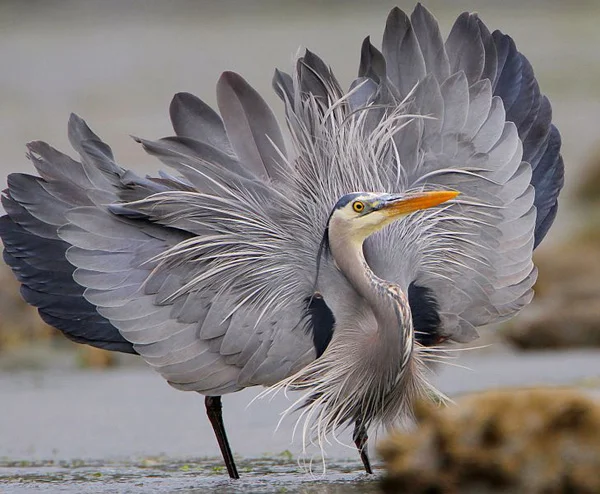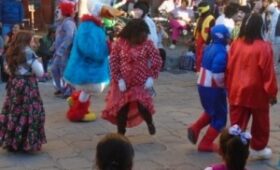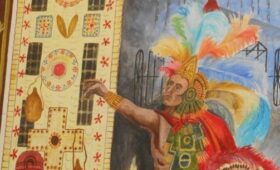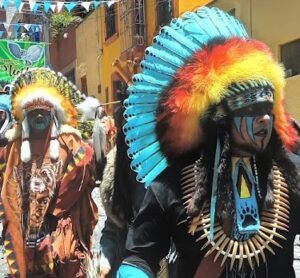 Feather-based art seen in town today are the traditional indigenous dancers with decorated headdresses, staffs, lances, fans, bracelets and sandals. All these feathers are a subset of an art form that reached its zenith just prior to the Spanish Conquest to about a century afterwards.
Feather-based art seen in town today are the traditional indigenous dancers with decorated headdresses, staffs, lances, fans, bracelets and sandals. All these feathers are a subset of an art form that reached its zenith just prior to the Spanish Conquest to about a century afterwards.
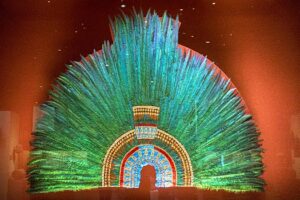 Prior to the conquistadors feathers were prized and used by highly-trained artists to create elegant and sumptuous pieces of high art displaying a ruler’s ties to the heavens and his supernatural prowess.
Prior to the conquistadors feathers were prized and used by highly-trained artists to create elegant and sumptuous pieces of high art displaying a ruler’s ties to the heavens and his supernatural prowess.
Hummingbirds supplied their iridescent green feathers, while herons’ were blue or gray and an eagle’s white and brown. Toss in 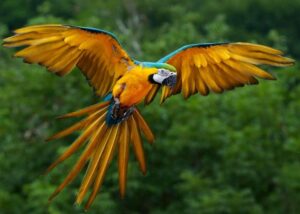 some parrots and macaws for red, lime green and yellow feathers that were more valued than gold and it is no surprise Mesoamericans took pride in their large aviaries.
some parrots and macaws for red, lime green and yellow feathers that were more valued than gold and it is no surprise Mesoamericans took pride in their large aviaries.
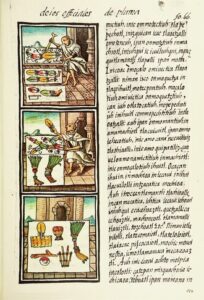 Feathers were measured by the handful – one codex (indigenous text) lists 8000 handfuls of rich turquoise, red and green feathers. A bird the size of a parrot yields around eight handfuls so a tribute of 8000 feathers would kill 1000 birds.
Feathers were measured by the handful – one codex (indigenous text) lists 8000 handfuls of rich turquoise, red and green feathers. A bird the size of a parrot yields around eight handfuls so a tribute of 8000 feathers would kill 1000 birds.
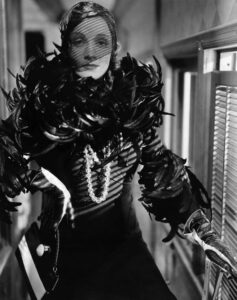 There were severe penalties for those who dared to wear feathers when not entitled to do so. No playing dressing up and creating unique fashion with feathers!
There were severe penalties for those who dared to wear feathers when not entitled to do so. No playing dressing up and creating unique fashion with feathers!
Then the Spanish arrived and soon feather-based art became prized in  Europe and the art’s focus shifted from glorifying indigenous rulers to glorifying the new religion’s players – Virgins, saints and alike. Feathers now appeared in religious art, altar pieces and priestly vestments to amaze the new religion’s recruits.
Europe and the art’s focus shifted from glorifying indigenous rulers to glorifying the new religion’s players – Virgins, saints and alike. Feathers now appeared in religious art, altar pieces and priestly vestments to amaze the new religion’s recruits.
However, by the 17th century the Golden Age of feather-based art ended as both the artists and birds passed on while time, direct sun, mold and insects destroyed much of the existing art.
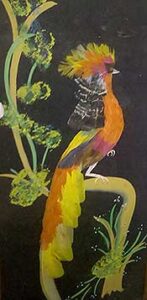 By the 19th century little remained of the art form aside for an occasional dance costume and kitschy framed images of birds made from their own feathers. Google “Mexican feather art” and these images appear to have an unending supply on Ebay and Etsy. Normally the bird’s image is of its own feathers while legs, beaks, branches and flowers are painted on.
By the 19th century little remained of the art form aside for an occasional dance costume and kitschy framed images of birds made from their own feathers. Google “Mexican feather art” and these images appear to have an unending supply on Ebay and Etsy. Normally the bird’s image is of its own feathers while legs, beaks, branches and flowers are painted on.
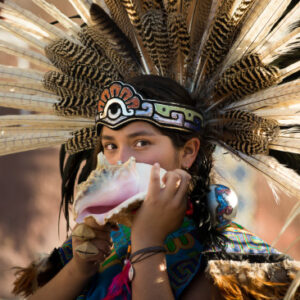 During your viewing of the next indigenous procession realize just how powerful and fantastic feathers are!
During your viewing of the next indigenous procession realize just how powerful and fantastic feathers are!
